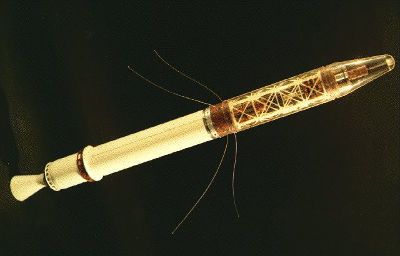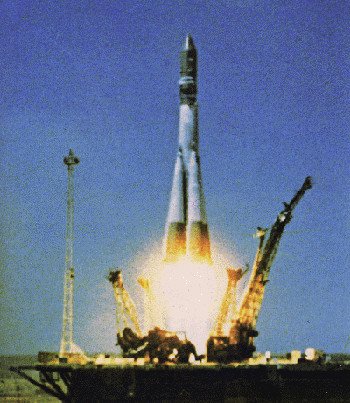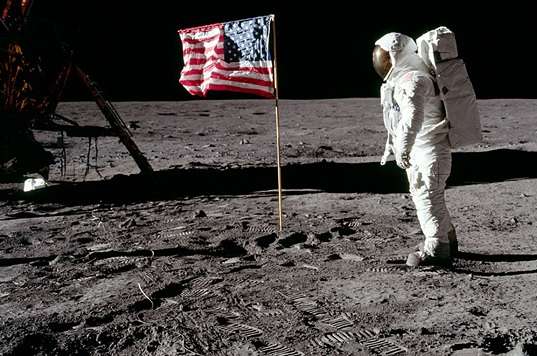6 Key Events of the Space Race
Launch of Sputnik 1

On October 4, 1957, the Soviet Union successfully launched Sputnik 1, the world’s first artificial satellite. A huge milestone concerning spacecraft technology, the event shocked the United States which was working on launching its artificial satellite. But it also encouraged the United States to create NASA and take a more serious approach to the space program to catch up with the Soviet Union. The event thus effectively triggered what came to be known as the Space Race. Besides striking a massive blow to the Soviet rival, Sputnik 1 also provided the scientists on Earth with valuable information regarding the Earth’s atmospheric density and ionosphere. It orbited the Earth for three months before burning up while falling from the orbit into the Earth’s atmosphere on January 4, 1958.
Launch of Sputnik 2

Less than a month after the successful launch of Sputnik 1, the Soviet space program achieved another major ‘victory’ in the Space Race. On November 3, 1957, the USSR successfully launched the second spacecraft into the Earth’s orbit - Sputnik 2. This time, however, the spacecraft was carrying a living animal, a dog called Laika which became the first living being to orbit the Earth and provide critical biological data for the later manned spaceflights. Laika, the stray female dog that was selected for the mission, died a few hours after the launch of Sputnik 2, while the spacecraft itself continued to orbit the Earth for 162 days.
Launch of Explorer 1

After the launch of Sputnik 1 and 2, the United States stepped up in its efforts to launch its artificial satellite, and on January 31, 1958, the Army Ballistic Missile Agency (ABMA) successfully launched Explorer 1. Besides establishing a balance in the Space Race, the first U.S. satellite also provided invaluable information which, among other things, also proved to be of crucial importance for the discovery of the so-called Van Allen radiation belt. Explorer 1 collected data for almost four months before exhausting its batteries, but it continued to orbit the Earth until 1970. In addition to being the first U.S. artificial satellite, Explorer 1 was also the first in the series of over 90 Explorers, the last of which - TESS - was launched on April 18, 2018.
Launch of Vostok 1

Vostok 1 was the greatest Soviet triumph in the Space Race. On April 12, 1961, the Vostok spacecraft took off from the Baikonur Cosmodrome; it was carrying Yuri Gagarin (1934-1968) who became the first human in history to travel into space. Gagarin orbited the Earth for nearly two hours. Although the Soviets initially stated that he landed with the Vostok, the famous cosmonaut parachuted from his capsule when reaching a safe altitude. After the success of Vostok 1, the USSR again took the lead in the Space Race. But the triumph didn’t last for long this time either.
Launch of Mercury-Redstone 3

The Soviets beat the United States with the first successful human spaceflight, but just a few weeks after Vostok 1, NASA launched its own “Vostok program” - known as Project Mercury. On May 5, 1961, the Mercury-Redstone 3 (also known as Freedom 7) took off from Cape Canaveral in Florida with astronaut Alan Shepard (1923-1998) on board. In contrary to Gagarin, Shepard didn’t enter the Earth’s orbit. Instead, he conducted a 15-minute long suborbital flight. Despite that, he became the first American and the second person in the world to make a successful human spaceflight. In addition to paving the way to the future U.S. manned orbital spaceflights, the Freedom 7 mission also somehow eased the blow to the American space program that was inflicted by the success of Vostok 1.
Apollo 11 Moon Landing

Soon after the launch of Project Mercury, NASA laid down plans for the first manned Moon landing. The Soviets also had plans for a manned mission to the Moon, but by 1969, their Cold War rival had a spacecraft and a crew that would claim the ultimate victory in the Space Race: Neil Armstrong, Michael Collins and Buzz Aldrin. The Apollo 11 spacecraft took off from the Kennedy Space Center on July 16, 1969. Four days later, the Lunar Module separated from the Command Module and took Armstrong and Aldrin to the Moon to make the first Moon walk in history, collect lunar material, take photos and place the U.S. flag on the Moon’s surface. Realizing that the race to the Moon was lost, the Soviet Union canceled their lunar program and instead, focused on building a space station. On April 19, 1971, the Soviets successfully launched the world’s first space station called Salyut 1.